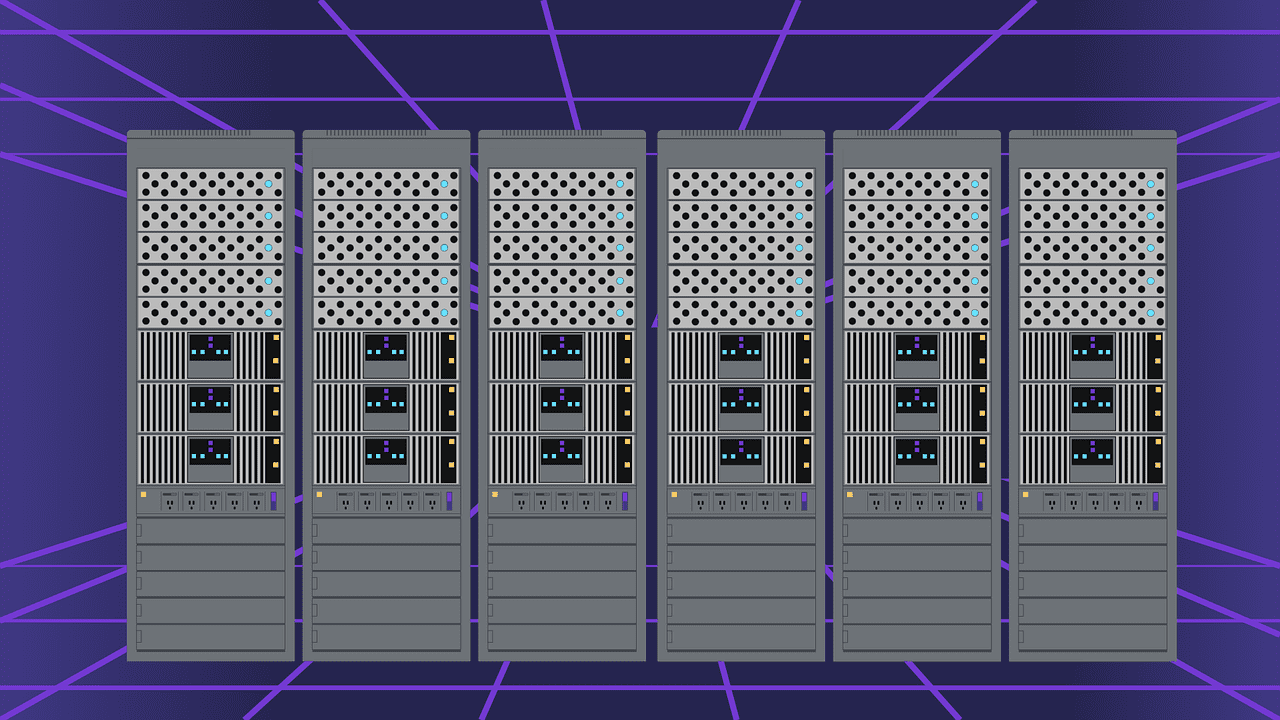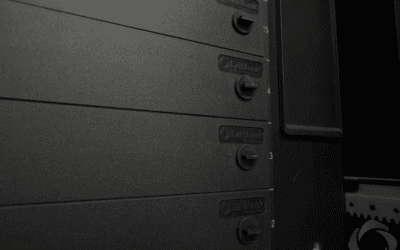Understanding Server Racks
A server rack is a structure designed to house technical equipment such as routers, switches, hubs, and servers. This structure allows businesses or data centers to keep multiple pieces of equipment in one place, maximizing space efficiency and environmental control.
A server rack is an open frame designed for mounting multiple electronic equipment modules. It can run from floor to ceiling, housing several different servers owned by various clients. The servers are mounted one on top of the other within a rack to minimize the space used by each client.
While server racks come in a range of sizes, most servers are built according to a standardized measuring system known as rack units. This ensures that servers of varying shapes and sizes can be accommodated without much difficulty.
The Role of Rack Units in Server Storage
A rack unit (U) is the standard size for network equipment, with one U equating to 1.75 inches. The height of a server in rack units indicates the amount of space needed to house the equipment. While the width and depth of standard data center racks can vary slightly by the manufacturer, the industry standard is 19 inches wide and 36 inches deep.
Servers come in sizes of 1U, 2U, and 4U. A 1U server typically occupies a dimension of 1.75″ by 19″ of rack space. There are also 2U and 4U servers, which offer more computing power but take up more space on the rack.
There are also half rack and full rack accommodations. The majority of rack spaces are 19″ wide, and a half-rack accommodation can store multiple pieces of servers. A full rack, on the other hand, allows for additional CPUs and memory to be added into the client’s network. Full-sized rack servers may be 19″ wide, requiring an entire rack to themselves.
Width of Server Racks
The standard server racks are 19 inches wide. Most rack-mounted equipment will have a mounting width of 19 inches, so keeping the width of server racks the same simplifies installation. The technology will fit a 19-inch server rack perfectly, eliminating the need for individual measurements of each piece of equipment.
The exterior width of 19-inch racks is typically around 24 inches. This size works well for data centers, as their floor panels are usually 48 inches. Therefore, floor space can be used efficiently with racks of this size. When server racks with a 24-inch exterior width are used, there’s still plenty of room to add cables and other equipment.
Height of Server Racks
Server rack height is a critical factor to consider when choosing a rack. The height is determined by the U count. Over time, 42U, 45U, and 48U racks have become commonplace in data centers, as they provide ample space while maintaining a manageable size.
However, it’s important to consider the practicality of these heights. For instance, many legacy facilities and offices can’t fit 45U and 48U racks. Therefore, it’s crucial to check the heights of your doors before opting for these.
There are other height options available as well, such as 22U and 27U racks, otherwise known as half-racks. Open-frame racks come in a wide variety of heights, ranging right up to 70U for the very highest options.
Depth of Server Racks
The depth of a server rack, typically measured in inches, can vary significantly based on the requirements. Commonly, you’ll find depths around the 42 inches or 48 inches mark. However, certain brands like Dell, IBM, and HP have been known to use shallower 29-inch racks for open frames.
If you have a rack with considerable depth, you can make your own adjustments using rails to accommodate a smaller size server if necessary. It’s important to note that larger equipment may require more rack depth, so a 48-inch rack would be a better option for these.
Internal Dimensions of Server Racks
Most internal dimensions are materially the same width, though the depth can vary from rack to rack. Most rails are adjustable to account for this variance. The good news is that most racks will be able to handle it from a rail accommodation perspective. The challenge lies in cable management, weight distribution, and access, which is why different external cabinet sizes are offered.
Space Between Server Racks
Space is a key consideration when planning any server setup. You’ll need to ensure you’ve got room not just for your server racks, but also for the right amount of space between and around them. In general, a minimum of 30-inch hot aisles for clearance is recommended, but the ideal space is 36-inches. For cold aisles, 4 ft provides adequate space to allow for proper removal of equipment.
Choosing Between 2-Post and 4-Post Racks
The rack type is another critical factor to consider when looking at server rack sizes. A 2-post rack is constructed from two vertical upright support beams, while a 4-post rack is constructed from four beams.
A 2-post rack’s mounting depth limitations depend on construction rather than another set of posts getting in the way. However, 2-post racks are best for lighter technology or accessories that require less depth, such as switches, patch panels, routers, and telecommunication equipment.
On the other hand, 4-post racks can carry much more weight than 2-post racks as rails and shelves connect on all four posts. This gives you more mounting depth requirements than 2-post racks, but it is made up for in sturdiness.
Choosing the Right Server Rack for Your Needs
When choosing a server rack, it’s essential to consider your overall setup and your plans for installation. If you’re installing a rack for a home or office setup with limited equipment, a half-rack or smaller might be the way to go.
On the other hand, if you’re preparing to install your rack in a server room or data center, it’s best to overestimate how much space you need in case your business grows and your needs change.
Summary
Server racks are an integral part of any server setup. Understanding their dimensions and how they’re measured can have a significant impact on how your system works and what it’s ultimately capable of doing.
Whether you’re a small business owner looking to build your server for expansion plans, or a data center manager seeking to optimize space and efficiency, understanding server rack dimensions can go a long way in helping you make the right choice.
Remember, the perfect server rack for you depends on your specific needs, the size of your equipment, and the space you have available. Always consider these factors before making a purchase to ensure that you get the most out of your investment.




